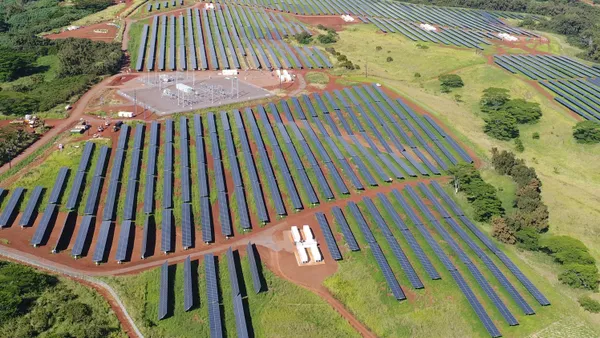The large-scale clean energy projects announced in the year after the Inflation Reduction Act was passed could add 403,000 new jobs in the U.S. and as much as $156 billion to the GDP during construction, says a report from business group E2.
The report, produced by BW Research Partnership and released by E2 on Wednesday, models the potential economic benefits of 210 clean energy projects across 38 states that were tracked by E2 from the August 2022 signing of the IRA through August of this year.
If all 210 projects are completed, the analysis projected that they would create or support 303,500 jobs during the construction phase, and 99,600 jobs after the projects are completed. The report also estimates that after construction, the projects would add $13 billion annually over their operational lifetime.
“The study is the first to analyze the direct, indirect, and induced jobs and benefits created by these historic investments,” E2 said. “It shows that while the construction industry and its supply chain will see the biggest benefits, other sectors ranging from healthcare and hospitality to retail trade and real estate will also benefit greatly.”
The report defines direct effects as economic benefits that directly result from IRA investment, while indirect effects include benefits like new jobs added across the supply chain as a result of increased demand from direct effects. Induced effects are the result of increased household spending from direct and indirect workers.
Though the demand for more workers in the renewable energy industry has increased significantly since the IRA, employers are facing a labor shortage that may put projects at risk.
The Interstate Renewable Energy Council’s 2022 National Solar Jobs Census found that 44% of solar industry employers reported that it was “very difficult” to find qualified applicants.
Nevertheless, the E2 report estimated that announced solar projects will result in about 47,200 new jobs during construction and beyond. That puts solar third in job creation behind electric vehicle projects, which account for about 240,000 jobs, and energy storage, which accounts for about 62,400 jobs, in E2’s report.
The report also provided job estimates for wind, clean fuels and electric transmission and distribution, with wind coming in fifth in terms of total expected new jobs at about 13,000.
The report also estimates that the projects will generate $32.5 billion in combined federal, state and local tax revenues while under construction, followed by an annual $2.9 billion in tax revenues annually once operational.
The report noted that 56 of the 210 project announcements didn’t provide capital investment estimates, and 68 of them did not provide job creation estimates, so the analysis in the report relied partially on extrapolated estimates.















